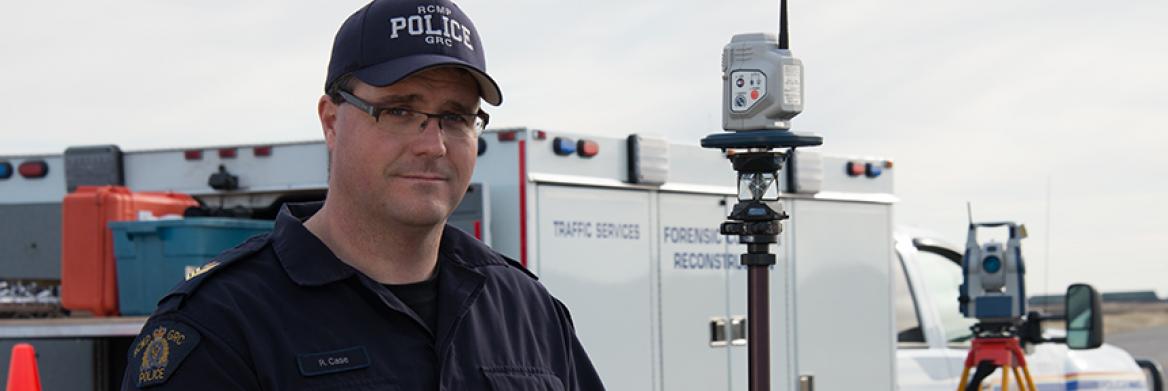Collision reconstructionists face all sorts of challenges, from treacherous weather conditions to coping with the emotional side of fatal collisions. Sgt. Ryan Case, the program manager of the Saskatchewan RCMP's Collision Reconstruction Program, tells Deidre Seiden how, by being methodical and applying the laws of physics, he can determine the cause of deadly collisions.
What is a collision reconstructionist?
A collision reconstructionist is a member who has special training in the area of collision analysis, which is basically the forensic side of investigating collision scenes. A reconstructionist gets called to serious injury and fatal collisions or any other collision that a lead investigator or detachment investigator requires assistance with. A reconstructionist basically determines what occurred and the causes and contributing factors in a collision.
What role does science play?
The field of collision investigation and collision reconstruction is based on the laws of physics. We look at how the vehicles are interacting with each other, and how the vehicles are travelling to their post collision final rest positions and things of that nature. The laws of physics apply to every single collision investigation that we conduct.
When you're at the scene of an accident, what are you looking for?
The number one thing that we're really interested in is tire marks. Pre-collision tire marks are very helpful because they show direction of travel and where the vehicles were placed on the roadway prior to colliding with each other. That's important because they'll help determine which driver caused the collision in the first place. Post-collision tire marks will show exactly where the vehicle travelled. After colliding with each other and disengaging from each other, they travel to their final rest position. And those tire marks are critical in order for us to conduct a speed calculation. Looking at those tire marks, we have to determine whether or not they were created by a braking tire, so a tire that has locked up while skidding, and whether or not those tire marks were created by conventional braking, which every vehicle has, or if they are created by ABS tires. By determining that, it affects the speed calculation.
How long does it take to figure out the cause of an accident?
When we are done the scene investigation, we have a pretty good idea as to what occurred right then and there. However, there have been times when I've sat down and put everything together and my opinion changed a little bit as to what occurred. We're looking at a good two to three months until we have everything 100 per cent completed and submitted to the lead investigator.
Can you draw an accurate conclusion as to the cause of an accident?
For the vast majority of investigations we are able to come up with some hard-and-fast conclusions. There may be another aspect of the investigation that we're not able to draw a conclusion from, usually due to the lack of evidence at the scene. What I always like to say is that anything that we come up with is an educated conclusion or opinion because it's based on evidence.
How do you help with the investigation?
We are real-time data gatherers. When it comes down to truly understanding the causes and contributing factors and why these fatal and ugly crashes are occurring on our public roadways, we can say the vehicle was travelling at this speed so speed was a factor, or the passenger was not wearing his seatbelt for these reasons, which contributed to the death. Then it goes back to investigators and their intelligence-led approach to enforcement or their fatality reduction strategy plans that they may be coming up with. It gives them the data to say these are the reasons why these accidents are occurring and this is the effect we can have on them.
Why do you do what you do?
I think you would hear this from almost everybody — it's a challenge. It's not a job that everybody does. We feel that, by going out there and doing this, we are making a difference because we are providing facts and possibly closure to family members who may be involved. I hate to use the corny expression "justice is served," but if a criminal act is what actually caused the accident in the first place, we are able to support that investigation.
Reprinted with permission from the Pony Express ().
